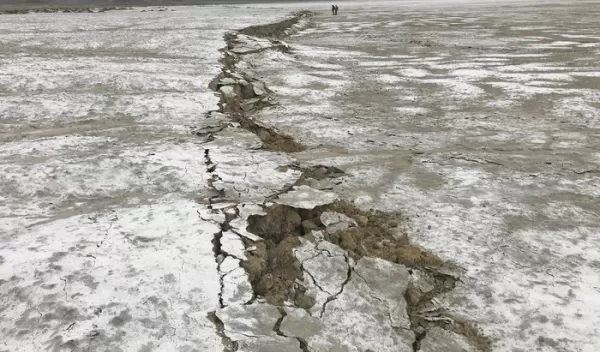
Seismic shockwave pattern may be redirecting earthquake damage
New research from The University of Texas at Austin could change the way scientists think about potential damage from earthquakes.
The U.S. National Science Foundation-funded scientists examined data from one of the densest seismic arrays ever deployed and found that earthquakes emit their strongest seismic shockwaves in four opposing directions. The effect, which leaves a pattern resembling a four-leaf clover, has been known for decades but never measured in such vivid detail.
Daniel Trugman, a geophysicist in the UT Jackson School of Geosciences, said the study looked at a type of seismic shaking caused by very small earthquakes in northern Oklahoma.
"What’s important in these results is that close to the source we’re seeing a variation in ground motion, and that’s not accounted for in any sort of hazard model," Trugman said. He added that efforts were already underway to see how the phenomena plays out in California’s big fault systems.
The analysis was published in Geophysical Research Letters and is based on measurements of two-dozen small earthquakes recorded by the LArge-n Seismic Survey in Oklahoma, an array of 1,829 seismic sensors deployed to monitor a remote corner of the state measuring 15 by 20 miles.
When earthquakes strike, they release a thunderclap of seismic energy at many frequencies, but the actual ground shaking people feel ranges from about 1 hertz to 20 hertz. The study found that low frequency energy -- about 1 to 10 hertz -- shot from the fault in four directions, but barely registered outside of the four-leaf clover pattern.
That’s important, the researchers said, because buildings are more vulnerable to low frequency waves. The four-leaf clover pattern wasn’t found in higher frequency waves, which travelled at equal strength in all directions, like ripples in a pond.
Co-author Victor Tsai, a geophysicist at Brown University, said the reason the Earth shook unevenly at different frequencies may relate to the complex geometry of earthquake faults and the broken-up material packed between them.
"What happens when you have an earthquake is that pieces of broken rock inside the fault zone start to move around like pinballs," Tsai said. The jostling pieces redirect the energy randomly, but at lower frequencies, seismic waves simply bypass the rough geologic mess near the fault, travelling in a nice four-leaf clover pattern just as physics predicts.
This means that on the surface, a person might feel the same shaking regardless of where he or she stood, but buildings -- which are sensitive to low frequency waves -- would be affected by the earthquake much more intensely within the lines of the four-leaf clover pattern.
"These insights into earthquake ground motion show that new geophysical data improve what we know about earthquake physics and can be used by Earth scientists to better understand how these processes affect earthquake hazards," said Eva Zanzerkia, a program director in NSF’s Division of Earth Sciences.


